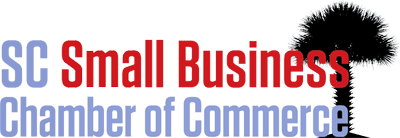“We anticipate small businesses will rush to apply for these loans. The government must make sure lenders are ready and able to deploy the cash,” Frank Knapp, Jr., co-chair of Businesses for Responsible Tax Reform and president of the South Carolina Small Business Chamber of Commerce, said in a statement.
CNN Business
March 26, 2020
(CNN) — The $2 trillion economic aid package unveiled Wednesday contains several provisions to help small businesses in the wake of the coronavirus pandemic.
Overall, small business groups are pleased some assistance is coming. But they also stress the package — which includes close to $400 billion in aid for small business owners — is still not enough to save Main Street.
“This doesn’t cure the crisis. It’s a good start. But more support will be needed,” said Derek Peebles, executive director of the American Independent Business Alliance (AMIBA).
The provisions are also unlikely to save those small businesses that will have to come up with cash to stay afloat until they can actually get the government’s aid money in hand.
“There’s no way many can keep going,” said John Arensmeyer, CEO of Small Business Majority, a national small business advocacy group.
Speed will be key to helping any small business survive, especially when it comes to dispensing the forgivable loans that will be available to owners who keep paying their employees during the crisis.
“We anticipate small businesses will rush to apply for these loans. The government must make sure lenders are ready and able to deploy the cash,” Frank Knapp, Jr., co-chair of Businesses for Responsible Tax Reform and president of the South Carolina Small Business Chamber of Commerce, said in a statement.
Here’s a breakdown of the major provisions small businesses included in Congress’ aid package:
An emergency grant of up to $10,000: Small businesses may apply directly to the federal Small Business Administration to receive an economic injury disaster grant of up to $10,000 that does not need to be paid back. The money would be paid out to business owners within three days of their application’s submission. It can be used to maintain payroll, cover paid sick leave and service other debt obligations.
Short-term forgiveness on new loans of up to $10 million: The bill allots $350 billion for special SBA loans that may be partially forgiven if certain conditions are met.
“Think of this as a grant that can be part of a bigger loan,” Jaret Seiberg, managing director of financial services at the Cowen Washington Research Group, wrote in his analysis.
SBA lenders will be authorized to make loans equal to 250% of an employer’s average monthly payroll up to $10 million.
Under that loan, eight weeks’ worth of payroll obligations (including wages and benefits), plus rent or mortgage payments and utilities will be forgiven, and the amount forgiven would not be treated as taxable income to the small business owner.
The new loans will be available through 800 SBA-approved banks, credit unions and other lenders. But the bill also calls on the SBA and Treasury to increase the number of lenders offering the new loans. And it calls on the agencies to expedite the loan process.
Lastly, owners who also take the $10,000 grant described above will see the amount of their loan forgiveness reduced by $10,000.
Provides a hiatus on paying existing SBA loans: Business owners that already have an existing SBA loan will not have to pay interest or principal on it for six months.
The bill allots $17 billion for the SBA to cover those payments instead.
A payroll tax credit to help retain employees: Businesses that have experienced a 50% drop in gross receipts relative to the same quarter last year may qualify for a payroll tax credit worth up to $10,000 per employee so long as they are still paying their employees wages and/or health benefits.
Even businesses that have furloughed employees due to forced closures under state and local mandates may claim the credit as long as they are still paying their workers wages or health benefits on furlough.
The credit would reduce the small business’ payroll tax liability and the employer may get an advance on that credit from the IRS.
The credit would also be refundable, meaning it would still be paid in full even if it exceeds the business owner’s payroll tax liability.
But there is one caveat: small businesses that opt to claim this credit will not be allowed to apply for the new SBA forgivable loans.
Other individual provisions: Small business owners, particularly self-employed independent contractors, may qualify for one or more of the provisions in the bill designed to help workers through direct cash payments and temporarily enhanced unemployment benefits.
https://www.cnn.com/2020/03/26/success/small-business-economic-stimulus/index.html

